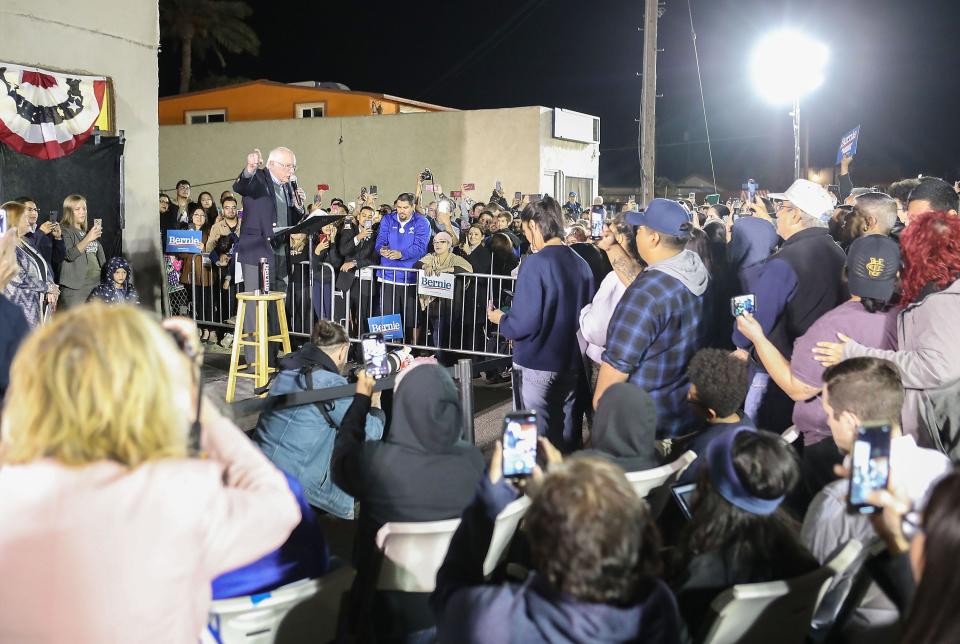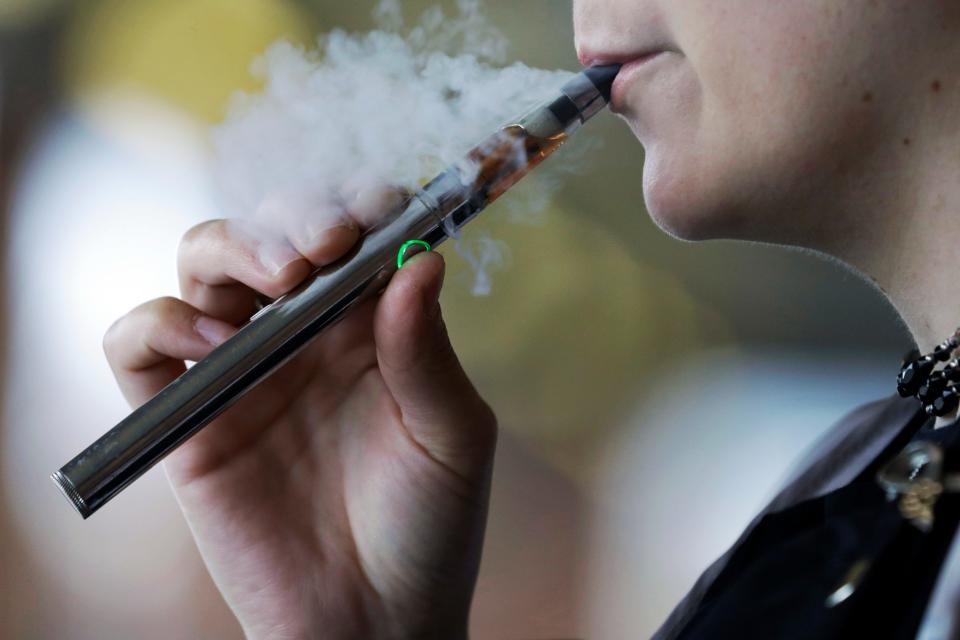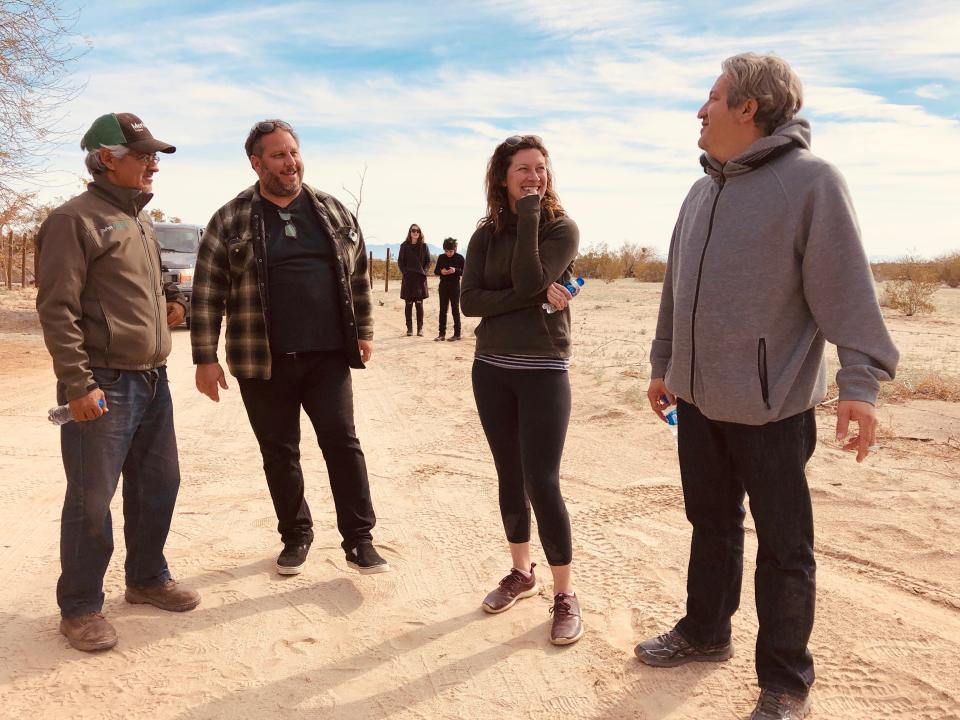Sanders kicks off his SoCal tour, and vaping sales plummet
Presidential hopeful Bernie Sanders spends the week in the Golden State. Vaping sales drop off after people die. And a team with the New York Times spends three months living in an Oakland homeless encampment some compare to slums found in Pakistan and Mexico.
It's news for Tuesday.
And later, I'll talk to Desert Sun Features Editor Kristin Scharkey, who went digging for a lost ship deep in the desert.
I'm Arlene Martinez, and I write In California, a roundup of stories from newsrooms across the USA TODAY Network and beyond. Sign up for M-F delivery here!
The Golden State feels the Bern

Vermont Sen. Bernie Sanders on Monday kicked off a Southern California tour in Coachella, where the entire City Council endorsed the candidate looking to unseat President Donald Trump. He'll spend the rest of the week here, heading to Los Angeles for the Democratic presidential debate on Thursday and to Moreno Valley on Friday for a town hall on his Green New Deal proposal. On Saturday, it's back to to Los Angeles for a rally alongside Rep. Alexandria Ocasio-Cortez, D-N.Y.
Hoping his proposals will resonate in the Golden State, the independent senator is punctuating his commitments to transforming the nation's healthcare, immigration and tax systems with California-specific appeals about issues like water and the wildfires that have ravaged the state.
Lessons in gender identity, O.J.'s Heisman and the measles at LAX
Boys can wear sparkles: A Ventura County school district gives elementary-age students lessons in gender identity.
O.J. Simpson's 1968 Heisman Trophy, which he won while playing at USC, is now in the collection of a Reno businessman.
Did you travel through LAX last week? You might want to do a measles check.
After people die, California vaping sales drop

After 52 people died and more than 2,400 were hospitalized with vaping-related lung illnesses, health officials warned consumers to stay away from vaping. In California, many consumers did.
Sales of legal THC-containing vapes in California’s legal market declined from around $82 million in August to $62 million in October, according to retail tracking data from BDS Analytics, which looks specifically at cannabis product sales. In response, the industry is working to make clear it wasn't the legal vapes but the contaminated, unregulated ones that pose the greatest dangers.
What else we're talking about
A opossum and her owner were stranded in Austin, Texas, for four days after being removed from a JetBlue flight headed for their California home.
A mountain lion kills three goats in Simi Valley between Thursday night and Sunday morning.
Alleged college admissions bribery scandal participant Lori Loughlin paid $500,000 to get her daughters into USC, but also asked them to do better in school, new court documents reveal.
Authorities intercepted an ultralight aircraft carrying 200 pounds of methamphetamine as it made its way into Riverside County from Mexico. Four men were charged with possession and intent to deliver meth.
Seven Democratic presidential hopefuls will go head to head during a debate Thursday after all, after party officials stepped in to settle a labor dispute that had threatened the Los Angeles forum.
3 months living in an Oakland homeless camp
It's been compared to slums found in Pakistan, Brazil and Mexico, but this homeless encampment is in Oakland. A two-person reporting team with the New York Times spent three months living there, and traveled to Mexico City to an encampment they heard was similar. But they found differences. The one in Mexico had on the whole more toilets, electricity and running water.
The editor of East Bay's homeless advocacy newspaper, Alastair Boone, counted 127 encampments in Oakland for the piece, and that didn't include the whole city.
Seeing people outside could become fairly common after the Supreme Court on Monday declined to revisit a lower court ruling that said homeless people can sleep outside if there's no suitable alternative, a blow to cities and counties that said the encampments were ripe for violence, disease and environmental hazards. Homeless proponents argued people shouldn't be punished for not having anywhere to go.
Her search for a lost ship in the desert

A phone call sent Desert Sun Features Editor Kristin Scharkey on a two-year search for a lost ship in the desert. Some say it's a Viking knarr, a merchant vessel, abandoned by Norse explorers who veered far south after navigating the Northwest Passage. Others think it's a Spanish galleon, full of black pearls, that made its way up the Gulf of California during the era of conquistadors. The quest took Scharkey longer than she intended, to places she hadn't imagined going. You can read the subscribers-only story here. And here's our Q&A:
We often get calls about intriguing stories. What drew you to follow this particular one?
After that phone call, I started poking around John Grasson’s website lostshipofthedesert.com. I got lost in the tales, the yarn he’d been unraveling for more than a decade. John catalogs references to the ship in books, newspapers and the like – I couldn’t believe the sheer number. I wanted to know more about how this paradox could be so persistent.
When did you realize, there is actually something here.
When John and I first met for breakfast, I was struck by his obsession. This is a man who considers the ship to be “the main focus” of his life. At that point, the story didn’t hinge on whether a ship could actually be found. For me, it became more about the believers in pursuit of its mystery.
Tell me a little about the research behind this project.
I started by reading everything I could about the ship – borrowing books from John, digging through newspaper archives. This inevitably led me to numerous studies about the desert’s geological history, to learn how a ship could have actually sailed in. As I continued to unravel various theories about the type of ship and its possible location, the “X in the sand” kept sliding farther south. This led me to Baja and another set of books and studies – this time about the Cucapá, the Colorado River delta’s indigenous inhabitants.
How did you end up in Mexico?
Theories swirl about the possibility of a ship in Laguna Salada, a dry lakebed just north of the Gulf of California. The first time I called a local farmer, Arturo Guerrero Cortés, it was actually to find out more about the region. As it turned out, he remembered seeing the wreckage of an odd-looking ship – and knew others who did, too. Photojournalist Omar Ornelas and I made several trips across the border to spend time with Arturo and a 62-year-old Cucapá auto mechanic, Jesús Antonio Muñoz, to listen to their memories.
It seemed your perspective on things changed as this project went along. What about this journey did that?
I don’t think it changed as much as it evolved. Oral tradition shapes this legend differently, depending on where – and who – you are. Initially, I found myself exposed to only one side of that story – the treasure hunters, the romantic mystique. Once we crossed the border, the legend became rooted in the difference between exploration and conquest, as I learned about it from indigenous Mexican men. The “lost ship of the desert” took me on a journey – one that ended in lament.
Why lament?
Because, as a white woman, I was confronted with the reality that my first interaction with the legend was that of adventure. I realized I’d only been learning about it from people who looked like me – and spoke the same language as me. I’m grateful to Omar, a bilingual Mexican man who has covered the U.S.-Mexico border for nearly two decades, for working on this project. As soon as he joined the team, we were able to conduct interviews in both English and Spanish. During that first conversation with Arturo and Jesús, the legend immediately shifted: It’s equally a reminder that settlement in this region came at a colonial cost. Lament came as I encountered the real-time repercussions of that legacy – and as I continue to wrestle with my place in it.
So, you’re the expert now. Is there a ship beneath the desert?
There’s certainly treasure all around, if you’re willing to look – and listen.
In California is a roundup of news compiled from across USA TODAY Network newsrooms. Also contributing: Los Angeles Times, New York Times, Associated Press.
This article originally appeared on USA TODAY: Sanders kicks off his SoCal tour, and vaping sales plummet

